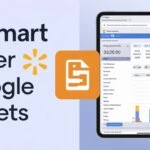What you’ll learn
Have you ever wondered where your customers actually come from?
If you’re running a Shopify store, chances are that you are juggling promotional offers, Meta ads, referral programs, and customer loyalty programs all at once. But how do you know which channel is actually driving your conversions? That is where market attribution comes in.
What is Marketing Attribution?

Marketing attribution is the process of figuring out which marketing channels and touchpoints deserve credit for a sale or conversion. Without it, you’re basically mining for gold blindfolded – you might be digging everywhere but never hitting the rich veins.
Just like a gold miner uses maps and tools to find the best spots to dig, marketing attribution models track and analyze the customer’s journey. You no longer have to guess which conversion is working! When you have the right data, you know exactly where to focus your efforts and resources – investing more where the gold is and cutting out the areas that aren’t producing any nuggets.
The 7 Marketing Attribution Models
There are seven different types of marketing attribution models you can choose from based on what works best for your business.
- Last click attribution

Last-click attribution is the most common model out there – and it’s the default for most marketing platforms and analytics tools. This single-touch approach gives 100% of the credit for a sale to the final ad or keyword a customer clicked before buying. This means that lower-funnel tactics (like branded search campaigns or retargeting ads) tend to get the spotlight, while upper-funnel (like brand-awareness initiatives) may go unrecognized.
Imagine a customer sees one of your Instagram ads for a new product, browses your store, but doesn’t buy right away. A week later, they click a Google search ad for your brand name and complete their purchase. With last-click attribution, all the credit goes to that Google ad – even though the Instagram ad was what first sparked their interest.
This model works best if your business has shorter sales cycles, straightforward purchasing decisions, or you’re selling something that’s often an impulse purchase. It’s especially handy for companies running campaigns focused on converting warm leads into paying customers as quickly as possible.
2. First click attribution

First-click attribution is all about giving 100% of the credit for a sale to the very first interaction someone has with your brand – whether that’s an ad, a search keyword, or some other entry point. It treats that first touch as the most important, which makes it great for figuring out which campaigns are best at bringing in traffic and reaching new audiences. This is especially useful for businesses where that first introduction really sets the stage for a customer’s buying journey.
The downside? By focusing only on the first click, this model ignores the impact of everything that happens afterward – like retargeting ads or other bottom-of-the-funnel strategies. That means these efforts might look less important than they actually are, which could lead to investing less in tactics that directly help close the sale.
It’s like saying, “Oh, they bought just because of that first Facebook ad,” even though they also joined your email list, clicked on a sale email, and saw a few retargeting ads before finally checking out.
3. Last non-direct click attribution

Last non-direct click attribution gives all the credit to the last marketing touchpoint before a customer comes straight to your store and makes a purchase. Basically, it ignores direct traffic – which usually comes from people who’ve already made up their minds – and instead focuses on the last tracked interaction that actually influenced the sale.
For example, say someone clicks on an email from you, then later visits your site directly and buys something. With this model, the credit goes to the email – not the direct visit. Direct only gets credit if it’s the only way you can track that customer before they buy.
This approach works really well for businesses that get a lot of direct traffic, but where that traffic can be misleading. Think established brands with strong name recognition, subscription services with loyal customers, or Shopify stores running frequent promotions. By filtering out those direct visits, you can get a clearer picture of which marketing channels are actually driving your sales and spend your budget smarter.
4. Linear attribution

Linear attribution spreads the credit for a sale evenly across every touchpoint in a customer’s journey-from the very first interaction all the way to the final click before purchase. It’s one of the simplest ways to give a shout-out to every step along the way, so nothing gets overlooked.
For example, imagine a customer who first discovers your store through a Facebook ad, then signs up for your newsletter, clicks a Google search ad a few days later, and finally uses a retargeting ad to make their purchase. With linear attribution, each of those touchpoints-the Facebook ad, the newsletter, the Google ad, and the retargeting ad-gets an equal share of the credit for the sale.
The downside? Because every channel gets the same amount of credit, it doesn’t really tell you which marketing activity had the biggest impact on the final decision.
This model works best for businesses with longer, multi-step sales cycles where lots of touchpoints matter-like high-value service providers or luxury brands. It’s great for companies that want to keep a balanced approach to investing across channels instead of putting all their eggs in one basket.
5. Time decay attribution

Time decay attribution is kind of like last-click attribution but a bit more balanced. It spreads the credit across all the touchpoints in a customer’s journey, but gives more weight to the interactions that happened closer to the actual purchase. So, the last few steps get the biggest shout-outs, while the earlier ones still get some recognition-but just less.
Imagine a customer who first discovers your store through a Facebook ad three weeks ago, then signs up for your newsletter two weeks later, clicks on a Google search ad a few days ago, and finally uses a retargeting ad yesterday to complete their purchase. With time decay attribution, the most credit goes to the retargeting ad since it happened closest to the sale, while earlier touchpoints like the Facebook ad and newsletter still get some credit-but less.
This model is great for businesses with longer sales cycles or products that need consistent attention and nurturing. It’s also a smart choice for brands running time-sensitive promotions, where those recent interactions often make all the difference in getting customers to buy.
6. Position based attribution

The position-based attribution model splits the credit by giving 40% to the first click and another 40% to the last click. The remaining 20% is shared equally among all the touchpoints in between. This model assumes that the first interaction – which brings a customer into your funnel – and the last interaction – which seals the deal – are the most important, while the middle steps still matter but to a lesser extent.
Imagine a customer first discovers your store through a Facebook ad, then clicks on a few different product ads while browsing, and finally completes their purchase by clicking a Google search ad for your brand. With position-based attribution, 40% of the credit goes to that very first Facebook ad that introduced the customer, another 40% goes to the final Google search ad that closed the sale, and the remaining 20% is spread out evenly across the ads they interacted with in between.
This approach works really well for businesses that care just as much about finding new leads as they do about closing sales – like ecommerce stores using multiple marketing channels or companies running both brand awareness and retargeting campaigns. It’s especially helpful when both that initial introduction and the final push to buy are key parts of your sales process.
7. Algorithmic attribution

Algorithmic attribution, sometimes called custom attribution, uses machine learning to figure out which touchpoints in the customer journey deserve the most credit for a sale. Instead of following a set formula, it looks at your historical data and assigns weight based on what actually drives conversions.
Think of a Shopify store that runs ads on Facebook, sends regular email newsletters, invests in Google search ads, and uses retargeting across multiple platforms. With algorithmic attribution, machine learning analyzes all that data-looking at how each touchpoint actually influences purchases over time. Instead of guessing or using a fixed rule, it figures out which channels deserve the most credit based on real customer behavior.
So, rather than just giving all the credit to the last click or the first click, this model helps the store owner see the true impact of every marketing effort and make smarter decisions about where to spend their budget.
This makes it one of the most accurate models, but only if you have enough good data. Without a large amount of reliable info, the algorithm might not give you meaningful or trustworthy insights. So, Algorithmic attribution would work best for bigger businesses or brands with a lot of traffic – like enterprise-level ecommerce stores, global subscription services, or companies running complex marketing campaigns across multiple channels. With plenty of data and diverse touchpoints, machine learning can help you get really clear, actionable insights about what’s working.
Why choosing the right marketing attribution model matters for your Shopify stores’ success
Choosing the right marketing attribution model is essential to understanding which channels and campaigns truly drive your sales – and ultimately, to making smarter decisions with your marketing budget. Each attribution model offers a unique perspective on how customers interact with your brand, and the best choice depends on your business type, sales cycle, and marketing goals.
Whether you’re a fast-moving ecommerce store focusing on last-click conversions or a large enterprise leveraging data-driven algorithmic attribution, there’s a model designed to fit your needs.
By implementing the right attribution approach, you can stop guessing and start investing in the marketing activities that deliver real results – maximizing your return on ad spend and fueling sustainable growth for your business.
Comments
Related Posts
Smart Guide to Import Amazon Data to Google Sheets
Running an Amazon business means juggling dozens of moving parts:…
Top 5 Strategies to Sustainable Shopify Growth: Turning One-Time Buyers into Lifetime Customers
What you’ll learn As a Shopify seller, you’re constantly looking…
Mastering Shopify’s UTMs: The Simple Way to Smarter Marketing
Let’s be honest: marketing your Shopify store without tracking what’s…






Leave a Reply